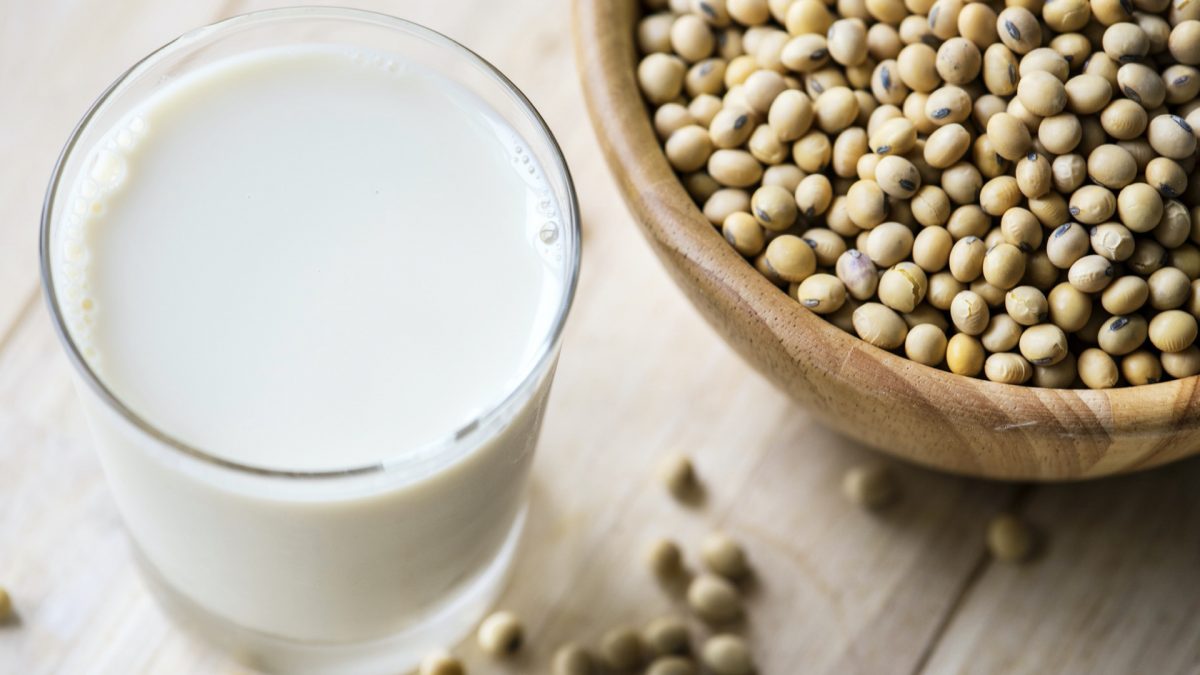“[S]oyfoods have become controversial in recent years…even among health professionals…exacerbated by misinformation found on the Internet.” Chief among the misconceptions is that soy foods promote breast cancer because they contain a class of phytoestrogen compounds called isoflavones, as I explore in my video, Is Soy Healthy for Breast Cancer Survivors? Since estrogens can promote breast cancer growth, it is natural to assume that phytoestrogens might, too, but most people do not realize there are two different types of estrogen receptors in the body, alpha and beta. Unlike actual estrogen, soy phytoestrogens “preferentially bind to and activate ERβ,” estrogen receptor beta. “This distinction is important because the [two types of receptors] have different tissue distributions within the body and often function differently, and sometimes in opposite ways. This appears to be the case in the breast,” where beta activation has an anti-estrogenic effect, inhibiting the growth-promoting effects of actual estrogen—something we’ve known for more than ten years.
The effects of estradiol, the primary human estrogen, on breast cells are “completely opposite” to those of soy phytoestrogens, which have “antiproliferative effects on breast cancer cells…even at [the] low concentrations” we get in our bloodstream after eating just a few servings of soy. This makes sense, given that after eating a cup of soybeans, the levels in our blood cause significant beta receptor activation, as you can see at 1:27 in my video.
Where did this outdated notion that soy could increase breast cancer risk come from? The concern was based largely on research that showed that the main soy phytoestrogen, genistein, stimulates the growth of mammary tumors in a type of mouse—but, it turns out, we’re not mice. We metabolize soy isoflavones very differently from rodents. As you can see at 2:00 in my video, the same soy phytoestrogens led to 20 to 150 times higher levels in the bloodstream of rodents. The breast cancer mouse in question had 58 times higher levels. What does this mean for us? If we ate 58 cups of soybeans a day, we could get some significant alpha activation, too, but, thankfully, we’re not hairless athymic ovariectomized mice and we don’t tend to eat 58 cups of soybeans a day.
At just a few servings of soy a day, with the excess beta activation, we would assume soy would actively help prevent breast cancer. And, indeed, “[s]oy intake during childhood, adolescence, and adult life were each associated with a decreased risk of breast cancer.” Those women who ate the most soy in their youth appeared to grow up to have less than half the risk. This may help explain why breast cancer rates are so much higher in the United States than in Asia, where soy foods are more commonly consumed. Yet, when Asians come to the United States and start eating and living like Americans, their breast cancer risk shoots right up. Women in their 50s living in Connecticut, for example, are way at the top of the breast cancer risk heap, as you can see at 3:00 in my video, and have approximately ten times more breast cancer than women in their 50s living in Japan. It isn’t genetic, however. When Japanese women move to the United States, their breast cancer rates go up generation after generation as they assimilate into American culture.
Are the anti-estrogenic effects of soy foods enough to actually change the course of the disease? We didn’t know until the first human study on soy food intake and breast cancer survival was published in 2009 in the Journal of the American Medical Association, suggesting that “[a]mong women with breast cancer, soy food consumption was significantly associated with decreased risk of death and [breast cancer] recurrence.” That study was followed by another study, and then another, each with similar findings. That was enough for the American Cancer Society, which brought together a wide range of cancer experts to offer nutrition guidelines for cancer survivors, concluding that, if anything, soy foods should be beneficial. Since then, two additional studies have been published for a total of five—five out of five studies that tracked more than 10,000 breast cancer patients—and they all point in the same direction.
Pooling all of the results, soy food intake after breast cancer diagnosis was associated with both reduced mortality and reduced recurrence—that is, a longer lifespan and less likelihood that the cancer comes back. This improved survival was for women with estrogen receptor negative tumors and estrogen receptor positive tumors, and for both younger women and for older women.
Pass the edamame.
Flaxseeds are protective for likely the same reasons. For more on this, see my videos Flaxseeds and Breast Cancer Survival: Epidemiological Evidence and Flaxseeds and Breast Cancer Survival: Clinical Evidence.
What about women who carry breast cancer genes? I touched on that in BRCA Breast Cancer Genes and Soy and Should Women at High Risk for Breast Cancer Avoid Soy?.
What about genetically modified soy? See GMO Soy and Breast Cancer.
Who Shouldn’t Eat Soy? An excellent question I answer in that video.
For even more information on soy, see:
- Should Women with Fibroids Avoid Soy?
- Soy Phytoestrogens for Menopause Hot Flashes
- The Role of Soy Foods in Prostate Cancer Prevention and Treatment
- Fermented or Unfermented Soy Foods for Prostate Cancer Prevention?
Not all phytoestrogens may be protective, though. See The Most Potent Phytoestrogen Is in Beer and What Are the Effects of the Hops Phytoestrogen in Beer?.
In health,
Michael Greger, M.D.
PS: If you haven’t yet, you can subscribe to my free videos here and watch my live presentations:
- 2012: Uprooting the Leading Causes of Death
- 2013: More Than an Apple a Day
- 2014: From Table to Able: Combating Disabling Diseases with Food
- 2015: Food as Medicine: Preventing and Treating the Most Dreaded Diseases with Diet
- 2016: How Not To Die: The Role of Diet in Preventing, Arresting, and Reversing Our Top 15 Killers
- 2019: Evidence-Based Weight Loss
